New England aster: description of varieties and cultivation features

In late autumn, the New England aster becomes the queen of the gardens. This late flowering plant is resistant to frost and powdery mildew, which makes it especially popular. Unpretentious to care for and diverse in appearance, this aster is able to decorate any area. It looks especially impressive under the sun's rays when it is as open as possible.
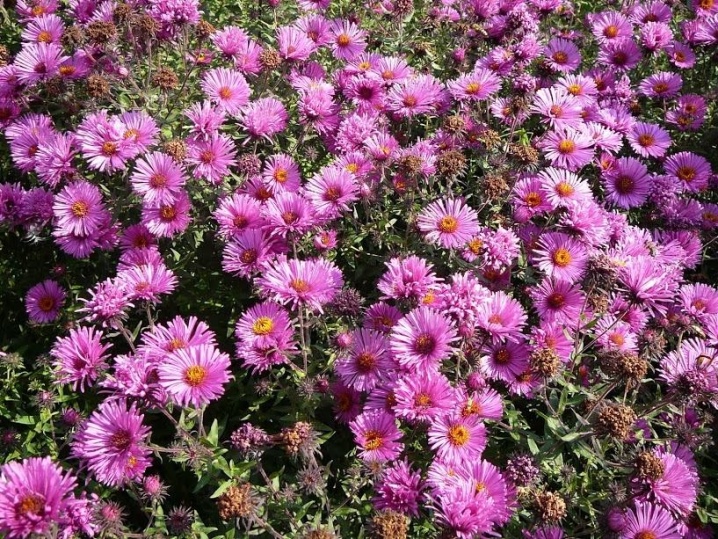
General characteristics
The New England Astra became known back in the 1700s, and its homeland is the center and east of North America. From here came another name for this type of aster - American. She herself presents decorative herbaceous plants for open ground with beautiful flowers. The perennial bush belongs to the Aster family, the genus Symfiotrichum. On average, the height of the bushes varies from 0.5 to 2 meters. In girth, plants of this species can reach 0.5-0.8 meters. It is worth noting that the aster of this species is branched, fluffs are located on the entire surface of its straight stem. On one bush, the number of flowers can reach 150-200 pieces.




Each stem has oblong lanceolate leaves and inflorescences in the form of baskets with a diameter of 3 centimeters. One inflorescence can contain up to 25-30 baskets, which are small reed and tubular flowers. Various colors of asters include pink, carmine, reddish, purple, blue, violet and yellow hues. Flowering time is the entire autumn period. Many varieties are able to withstand frosts down to minus 5 degrees. Gardeners love that flowering times vary slightly from variety to variety. Planting representatives of the New England aster is best in fertile land that is open to sunlight.


It is best to take the end of spring or the first month of autumn for a transplant. The division of the bushes must be carried out every 3 years. As for reproduction, it is carried out both by division and by cuttings.
Review of the best varieties
The variety of New England aster varieties is pleasantly impressive. Among them, each of the gardeners will find the most beloved ones. Of course, there are a number of varieties that are most popular, and the description of which is best known.
- Barr`s Blue It is a medium-sized bush with a height of about 120-125 cm. As the name implies, its flowers are bluish with a yellow core. Flowering occurs in the first autumn months. Differs in its endurance. It is recommended to plant about 5 bushes per square meter.


- Bars Pink it grows on average up to 100 centimeters, and the maximum height is 150 centimeters. The color of the flowers ranges from pink to lilac. Active flowering occurs in late September - early October. The diameter of the inflorescences is 4 cm, and they themselves are collected in the form of brushes.


- Purple Dome is a stunted representative of the American aster. The average height of the bushes is 40-50 cm. The inflorescences are purple in color with a dark tint. The diameter of one flower can reach 3.5-8 centimeters. Flowering begins in August and lasts until the end of September. Can be grown in areas with severe frost and acidic soils.

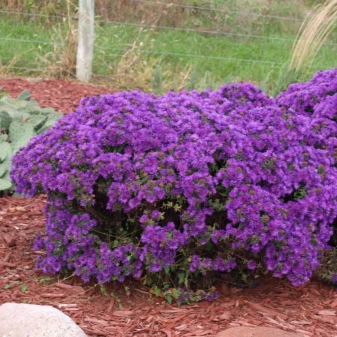
- Browmann - perennial aster with baskets of lilac and purple shades. Plant height reaches 120 centimeters.The bush is distinguished by branching and inflorescences with a diameter of 4 cm. Abundant flowering begins in September and can last until the end of autumn. Great for creating bouquets.

- Andenken an Alma Poetschke well suited for open ground in areas where in winter the temperature rarely drops below minus 10 degrees. The flowers are bright red with a salmon tint. Active flowering occurs in the first two autumn months. The height of the bushes reaches an average of 100-120 centimeters.
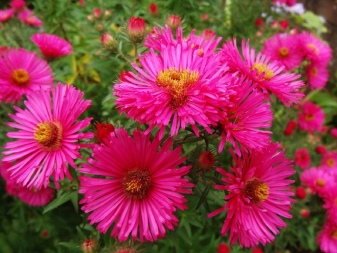

- Constance it is distinguished by expressive lilac flowers up to 8 centimeters in diameter. Aster can grow in one place for 5 years. The height of the bushes reaches 150-180 cm. They can grow in partial shade. The flowering time is approximately 30 days or more.
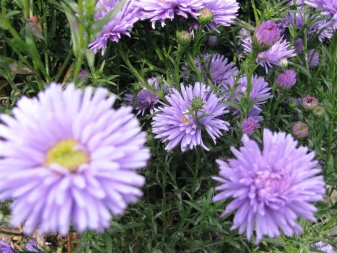

- Rudersburg characterized by an early flowering period. You can see pink flowers with a burgundy tint already in August-September. The average height of the bushes is 150-170 cm. Flowers in diameter can reach 5 centimeters.

Landing features
Unpretentious aster is planted in spring or autumn. Experts recommend choosing the spring period when the earth warms up better and the survival rate of plants is higher. It is best for them to choose areas with good lighting. In the shade, the shoots will stretch, and the number of inflorescences may decrease. An important point before planting is to determine the level of groundwater. The preparatory work of the soil also includes clearing the land from weeds, loosening and fertilizing. Planting with seedlings is most convenient. They should first be hardened at a temperature of 10 degrees. This must be done for 7-10 days.


Landing is carried out in the beds to a depth of no more than 8 centimeters. The planting scheme for bushes of average height is 15 by 20 centimeters, and for tall ones - 50 by 60 centimeters. Each of the seedlings is sprinkled with earth, compacted and watered.
Care Tips
As with any plants, timely watering is primarily important for the New England aster. Many gardeners love the plant for its drought tolerance. After all, if the summer is moderately rainy, then nature will do everything by itself, and you can completely do without watering. In the dry period, it is necessary to water the bushes once, maximum 2 times every 7-10 days. After watering, it is worth loosening the ground around the asters. It is important to take into account that the root system is located rather shallow. Optimally, if the depth of weeding is less than 5 cm. The plant prefers a nutrient soil with a neutral medium. If the soil is acidic, then lime or dolomite flour should be added to it. A light, loose soil with a drainage layer that avoids excessive moisture is considered ideal. And you can also carry out mulching using dry sawdust or peat.
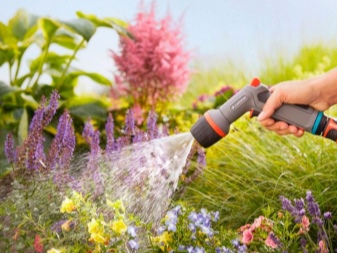
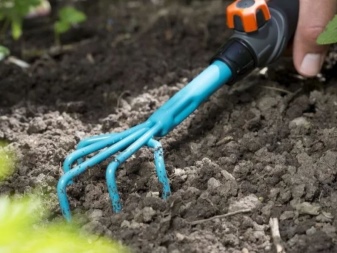
It is advisable to apply fertilizers no more than 3 times a year. For the first time, it is worth feeding when 4 leaves have appeared. For this, mineral fertilizers are suitable. During the budding period, it is better to use complex fertilizers. You can feed the bushes with a potassium-phosphorus composition during the period when they are actively blooming.
In too cold winters, when the temperature drops below 35-40 degrees of frost, it is worth insulating the plant. To do this, the stems must be cut, and the leaves with humus must be put on top. It is worth noting that New England aster tolerates extreme heat worse than cold. In summer, the optimum temperature is 26-28 degrees Celsius. You can prolong flowering by removing wilted flowers.

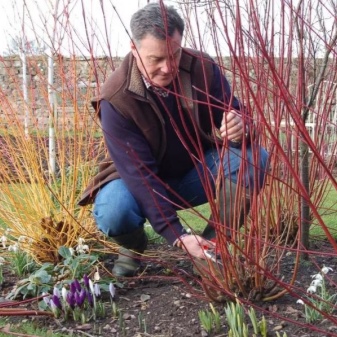
Reproduction methods
Most often, gardeners propagate the New England aster, dividing the bush into several. This procedure is carried out with plants that are 3 years old or more. They are divided into parts, which are called delenki. It is worth emphasizing that on each such section, the root system and at least 3 fresh shoots should remain. This method allows you to update the bush, plant new ones, and move the plant to another place without unnecessary problems.


And you can also divide the bush, leaving it in the same place and cutting off the parts with a shovel. Then the resulting delenki are planted in new places. In this case, it is important that the distance is at least 20 by 30 cm.
Cuttings are also a popular breeding method. This procedure consists in cutting the upper stem by 6-9 cm. The resulting parts must be placed in containers with soil and put in a warm place. A few days later, a root should appear at the cutting, then it can be planted in open ground. Some growers propagate American aster seeds. This process is quite complicated and is not suitable for all varieties. It consists in the fact that in the fall, after collecting the seeds, they are immediately planted in the ground to a depth of about 8 cm. It is advisable to cover them with branches or a layer of sawdust.


Diseases and pests
New England aster is distinguished by excellent health, but sometimes it is also affected by diseases or attacked by pests. For example, in order to prevent fusarium, it is recommended to soak the seeds in a manganese solution for a few minutes, and then rinse them with water. In that case, if this disease has struck the bushes, then all the diseased parts must be removed, and the healthy ones must be treated with a drug called "Fundazol"... Gray mold can affect asters in the summer during a rainy season. In this case, you can save them by using the "Topaz" product. And you can also use chemicals for the spring prevention of this disease.


If a brown bloom appears on the lower leaves, and they begin to swell, then the bushes should be treated with Bordeaux liquid. With yellow leaves and poor flowering, you should pay attention to insects that carry jaundice. The easiest way to deal with this is with insecticidal preparations. It is worth noting that the greatest harm to the American aster can be caused by aphids, scoops, spider mites. Their attacks can be prevented by fairly frequent weeding and garbage collection under the bushes. Experts recommend Aktofit as a chemical agent against flower pests.

Use in landscape design
In terms of use in landscape design, the American aster is universal. Any area with this late bloom will look bright and elegant. The varieties of this species are very harmoniously combined with other representatives of aster and various autumn flowers.
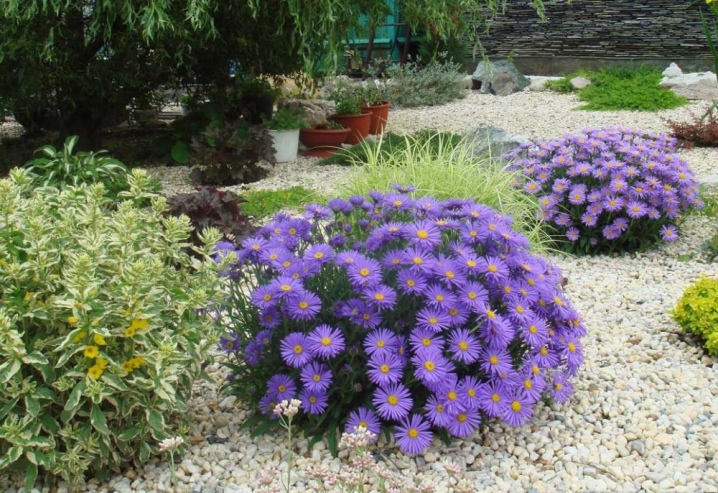
An excellent option for decoration is the combination of the New England beauty with shrubs and low trees. If you wish, you can cut flowers, form bouquets from them, and arrange them around the site, or collect them in original compositions.
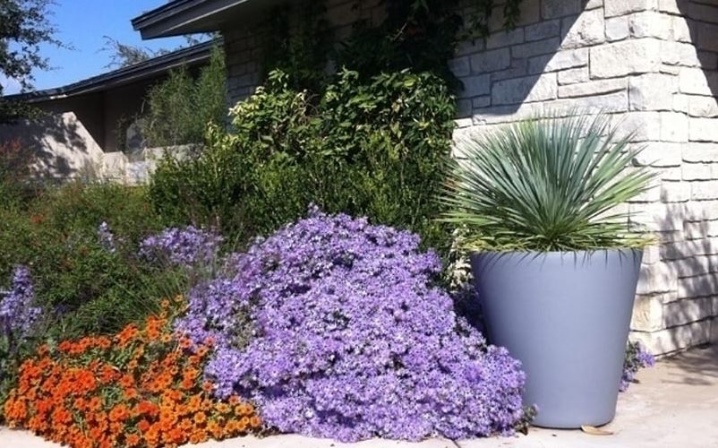
An interesting option would be to use the American aster in the form of a flowering hedge. To do this, it is enough to plant her bushes along the fence. Bright flowers will also be a great decoration for flower beds and borders. And both alone and mixed with other plants.

For information on how to properly care for New England aster, see the next video.







































































































The comment was sent successfully.